The 10 Most Haunted Places in San Francisco
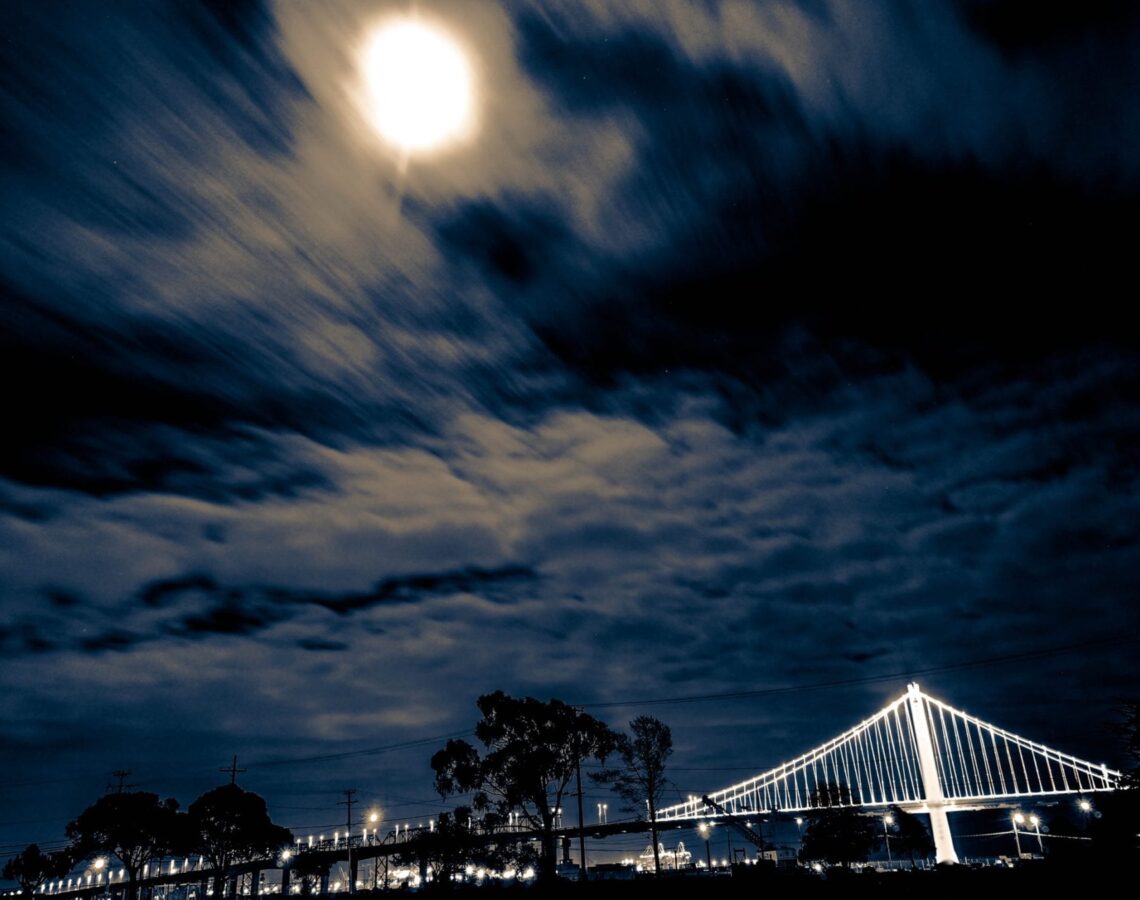
You ain’t afraid of no ghost, you say? You’re in luck, because San Francisco is teeming with paranormal activity. From the misty allure of Stow Lake to the under appreciated Haas-Lilienthal House, we’ve covered 49 miles of San Francisco’s most haunted locations. You won’t believe some of their stories.
10. Stow Lake

On a typically foggy day in 1916, a woman was taking a leisurely stroll around Golden Gate Park, pushing her child in a baby buggy. As they ventured deeper into the park, she grew tired and decided to take a rest on a bench near Stow Lake. As she was sitting, another woman came and sat down with her, striking up a captivating conversation.
Whilst the ladies were gossiping, the poor, unsuspecting mother failed to notice the stroller had started to slowly roll down the hill, and into the lake. Stricken with panic, the mother frantically ran around the lake begging bystanders to help her find her baby. She spent all day and all night searching for her child, but to no avail. At night’s end, she walked into the lake, still desperately searching for her dear child, never to be seen again.
Today it’s rumored that strange things happen in the dark of night at Stow Lake. Visitors have reported a ghost-white woman appearing from the midst shrouding the lake near the statue constructed in her honor, asking passersby, “Have you seen my baby?!” Other stories entail a ghoulish white lady appearing next to the driver’s window of passing cars begging for help. The spooky woman can also be summoned by brave souls who shout “I have your baby” three times.
But, be forewarned: if she appears and you tell her you have her baby, she will haunt you for the rest of eternity. Should you say no… we wish mercy on your soul.
9. Cameron House, Chinatown
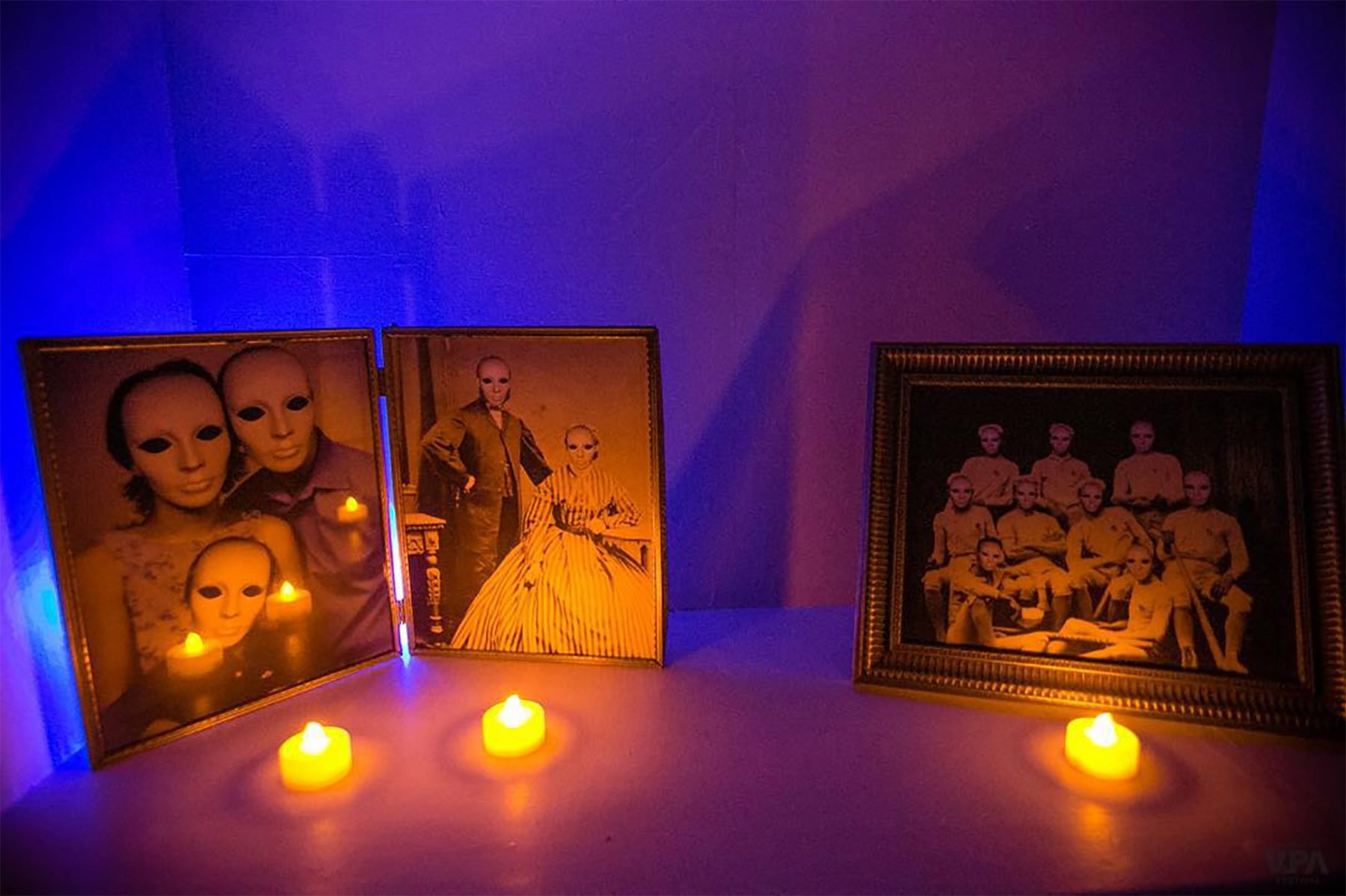
In 1882 The Chinese Exclusion Act had just been signed into law, and the only way Chinese women could legally immigrate to America was if they were married to an American citizen. The Act was passed in an attempt to limit the influx of Chinese male laborers and combat the sex trafficking of Asian women, but instead led to the emergence of a dangerous illegal prostitution and slavery ring. Dubbed the “Yellow Slave Trade”, Asian girls and women were illegally smuggled into the U.S. and sold by Chinese crime syndicates, imposing great harm to these young women.
Luckily for these women, Donaldina Cameron, a Presbyterian missionary known as the “Angry Angel of Chinatown”, was running the nearby Presbyterian Home, now known as the Cameron House. Donaldina Cameron dedicated her life to rescuing Chinese immigrant girls and women from indentured servitude and the sex trade in San Francisco, saving over 3,000 women over the course of her lifetime. The Presbyterian Home become a safe house for female Chinese immigrants during this time. When angry gangsters discovered Cameron’s doings, they set fire to the home, tragically killing some of the women who trapped inside.
When you visit the Cameron House in San Francisco’s Chinatown today, you will find red and gold charms strategically placed on every door to seal in the spirits of the immigrant women who perished in the basement when the building was set ablaze. But, every now and then, when a photo is taken within the home, you may find a ghoulish shadow cast in the distant background.
8. Golden Gate Bridge
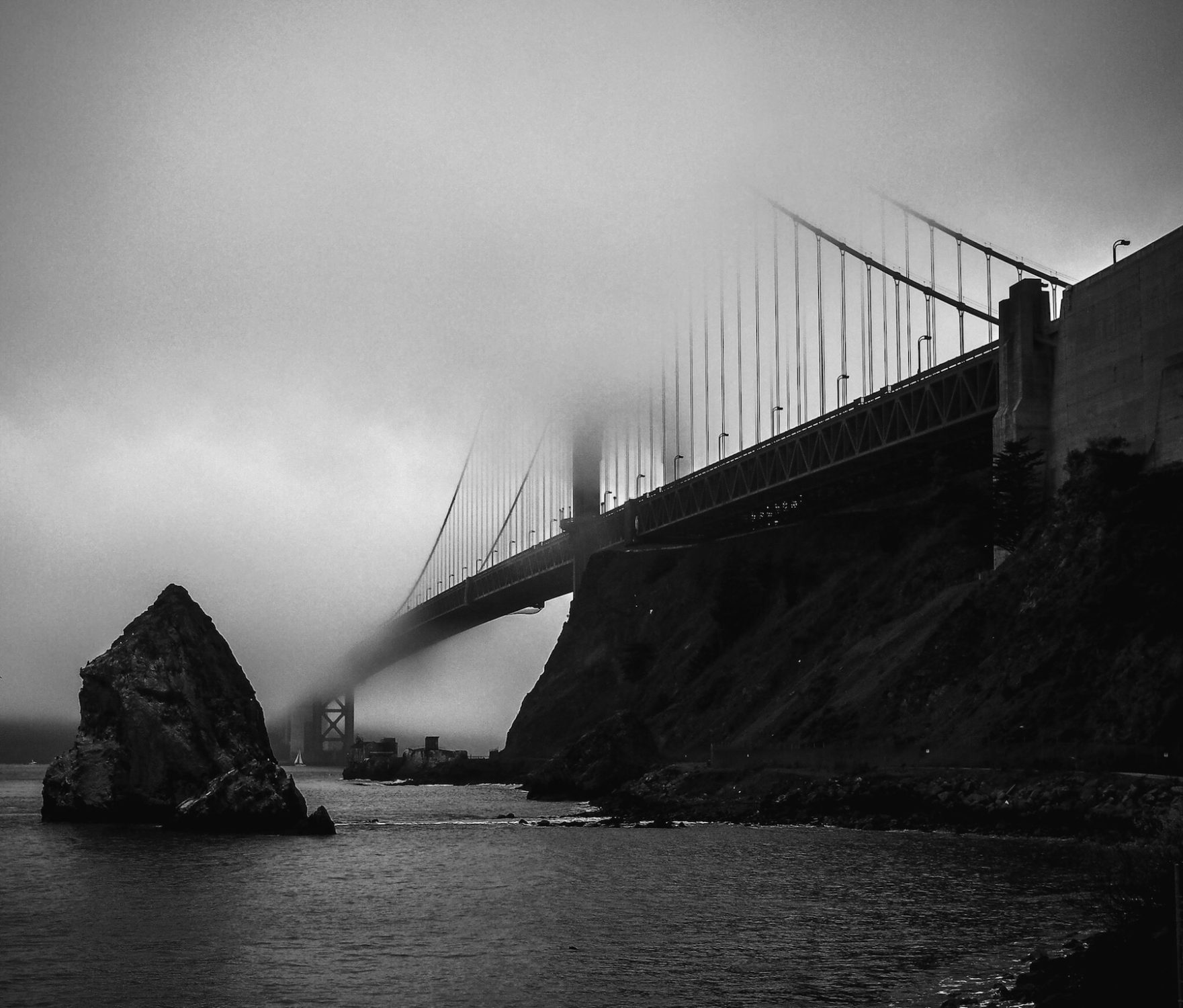
The iconic Golden Gate Bridge is internationally known as the “most photographed bridge in the world”. But, masked by its hidden beauty lies a darker secret.
Since its grand opening in 1937, more than 1,500 suicides by people jumping off the bridge have been reported. The distance from the highest point of the bridge’s walkway to the water at low tide is roughly 222 feet, equivalent to the height of a 19 story building. Jumpers are almost guaranteed death in one of two ways: death upon impact, or death by hypothermia. There is just a 2% survival rate.
In an effort to prevent suicides, the Golden Gate Bridge is closed to foot traffic after 6:30PM, and officers are assigned to patrol the walkway. Given the large death toll, it comes as no surprise that the tormented souls whose lives have been forfeited to the lure of the Bay can be seen on dark, foggy nights, roaming the walkways, and searching for a friend to once again make the jump into the deep abyss of the Golden Gate.
7. UCSF Medical Center

Located in the serene Parnassus Heights neighborhood is the UCSF Medical Center. During the day, the premises are full of life and energy, but as day turns to dusk, the hallways become cold and eerie with the ghosts of former patients gone too soon roaming them.
New mothers have reportedly been mysteriously attacked by the malicious spirits of women who’s lives were lost during childbirth on the 15th floor of the hospital, which was once home to the Intensive Care Nursery. Though stories of the 15th floor may be seemingly eerie, the 8th floor, formerly the pediatric unit, may prove to be the creepiest.
Spirits of mischievous children have been heard running around, giggling with glee as they pull pranks on existing patients and staff members. As the pranks escalated, reportedly leading to fatalities, the entire floor was exorcised. But still to this day, on the stillest of nights, patients report hearing faint giggles echoing throughout the hallway.
6. Russian Hill’s “House of Demons”
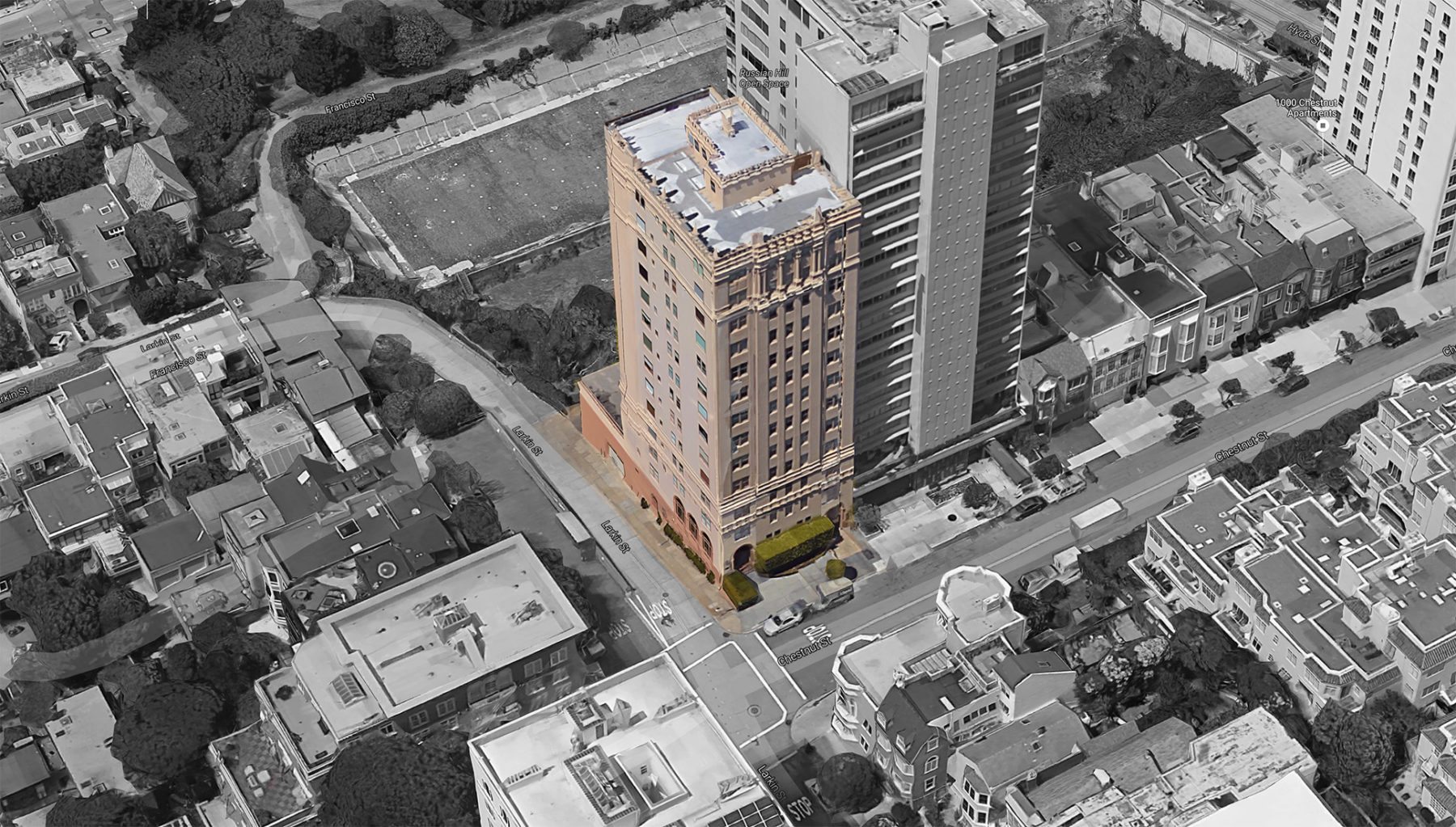
There was once a man named J.P Manrow, a successful civil engineer who built a grand Swiss-like cottage in the Russian Hill neighborhood during the mid-1800s. It was there he lived happily with his beautiful wife, until one dreaded day in 1856 when Mrs. Manrow’s sister and niece, who have been traveling around Hawaii, came into San Francisco for a visit. Little did Manrow know, his in-laws would be bringing some extra baggage into his peaceful home.
The days following their arrival would entail mysterious disturbances within the household, including a mysterious axe being thrown at an unsuspecting Manrow, narrowly dodging a gory demise. Growing weary of the spirits brewing mischief in his home, he told his two dear friends, lawyer William H. Rhodes and mining engineer Almarin Brooks Paul, of his hauntings at home. Rhodes and Paul were so fascinated by Manrow’s stories, the two decided to conduct a séance on September 19, 1856.
That still night, Rhodes, Paul, and the entire Manrow residence sat round a table to summon the spirits, a move that they would all soon regret. A tornado of furniture and books were flung around the room, and before them slowly emerged a figure so dark, repulsive, and menacing that the entire party frantically fled the house. It was from that day on the Manrow residence became dubbed the “House of Demons.” The house would later be torn down in December 1916, and in its place an apartment building was erected at 2700-2734 Larkin Street.
5. Presidio Pet Cemetery
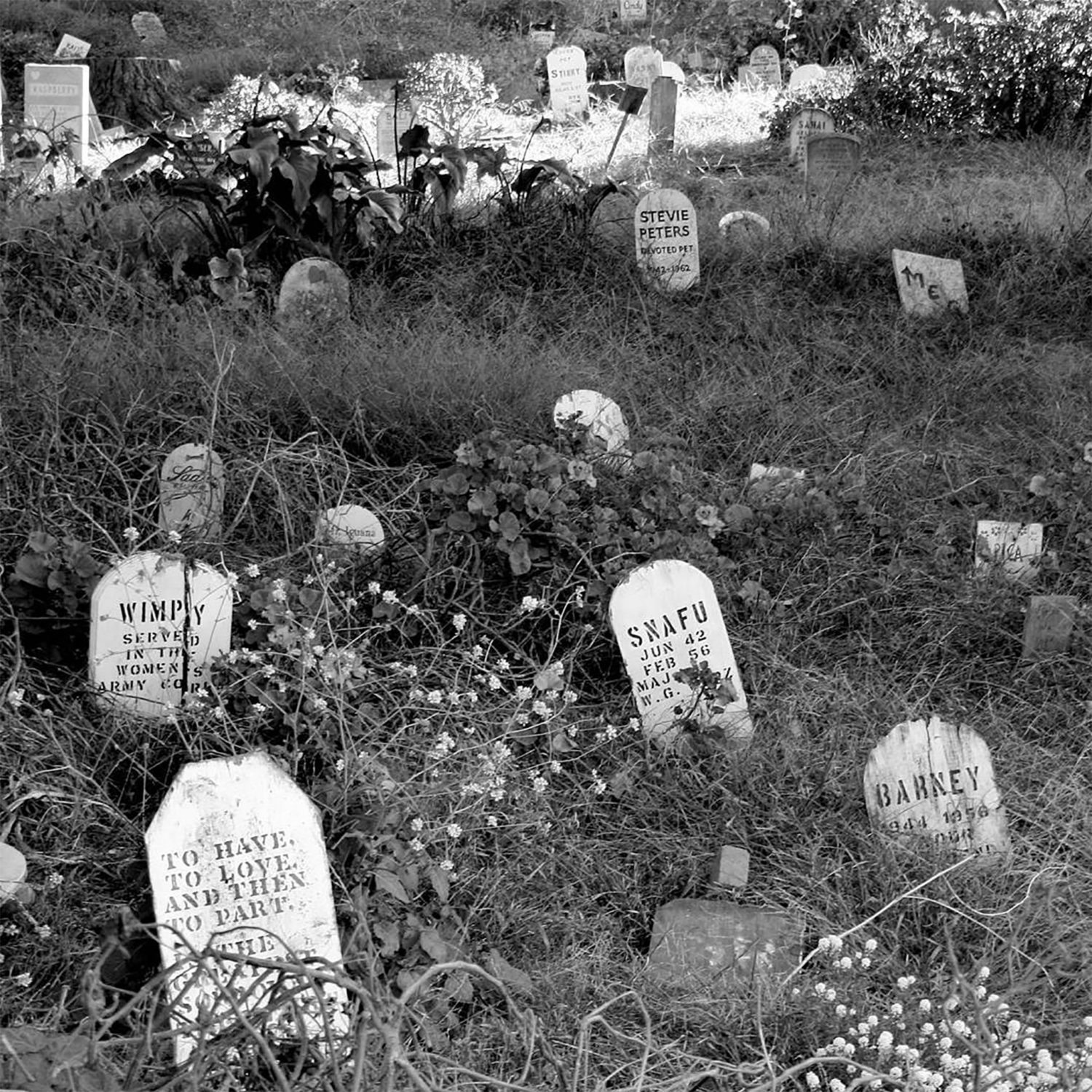
The Presidio Pet Cemetery dates back to the early 1950s, and is located directly below Doyle Drive. It is the final resting place for hundreds of animals owned by families that were stationed at the Presidio.
According to the National Park Service, there are no official records for the site — meaning it probably sprung up from the families themselves, with authorization from one of the Presidio’s then commanding officers.
Today, the cemetery is closed and animals are no longer allowed to be buried here. People have reported seeing ghostly figures, mostly animals and military officers, in the low fog while driving along McDowell Avenue.
4. Curran Theatre
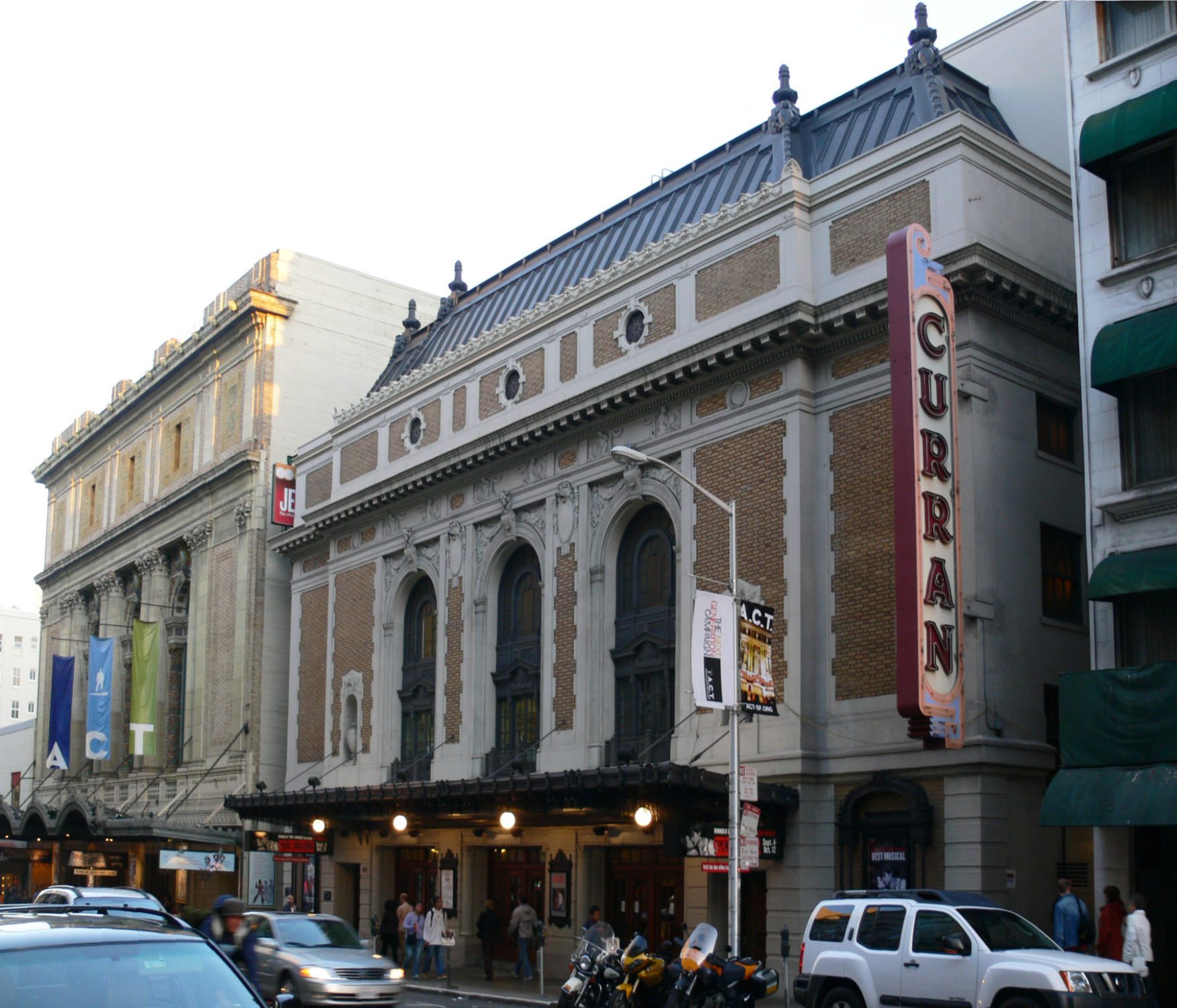
The Curran Theatre is located at 445 Geary Street in downtown San Francisco. It opened in February of 1922, and was named after its first owner, theatrical producer Homer Curran.
Urban legend has it, within the first few years of the theatre’s opening, an employee was murdered in attempted box office robbery. Ever since, guests admiring themselves in the lobby’s mirror have reported seeing a ghostly ticket-taker behind them. Scary stuff.
3. Alcatraz Island
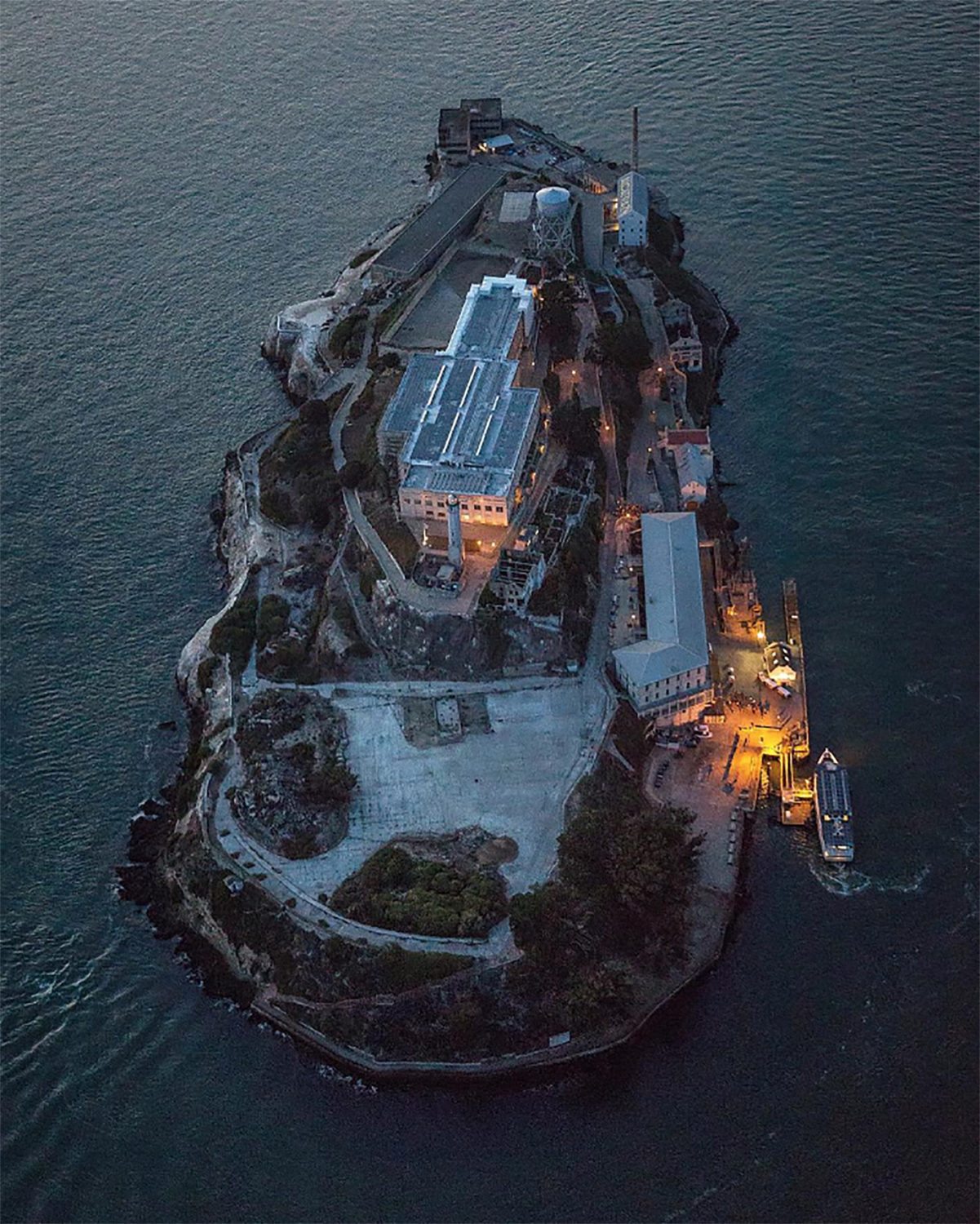
Alcatraz Island has experienced unexplained paranormal phenomenon in its many years of operation. In 1868 a military prison opened on the Island, and it was converted into a federal prison in 1933. Alcatraz Federal Penetionary shuttered on March 21, 1963.
Today, Alcatraz is a national landmark, managed by the National Park Service since 1972. Visitors and employees (especially during the popular night tour) have reported hearing phantom gunshots and chains rattling throughout the dark hallways and chambers of the famous prison. Unexplained voices, screams and crying have also been reported in the prison blocks.
Alcatraz’s most haunted section, is located in the prison’s D-Block, where four out of 42 cells are purported to be haunted (cells 11, 12, 13, and 14-D, which is considered to be the most haunted cell, permanently 20 to 30 degrees colder than other parts of the prison).
2. The Queen Anne Hotel
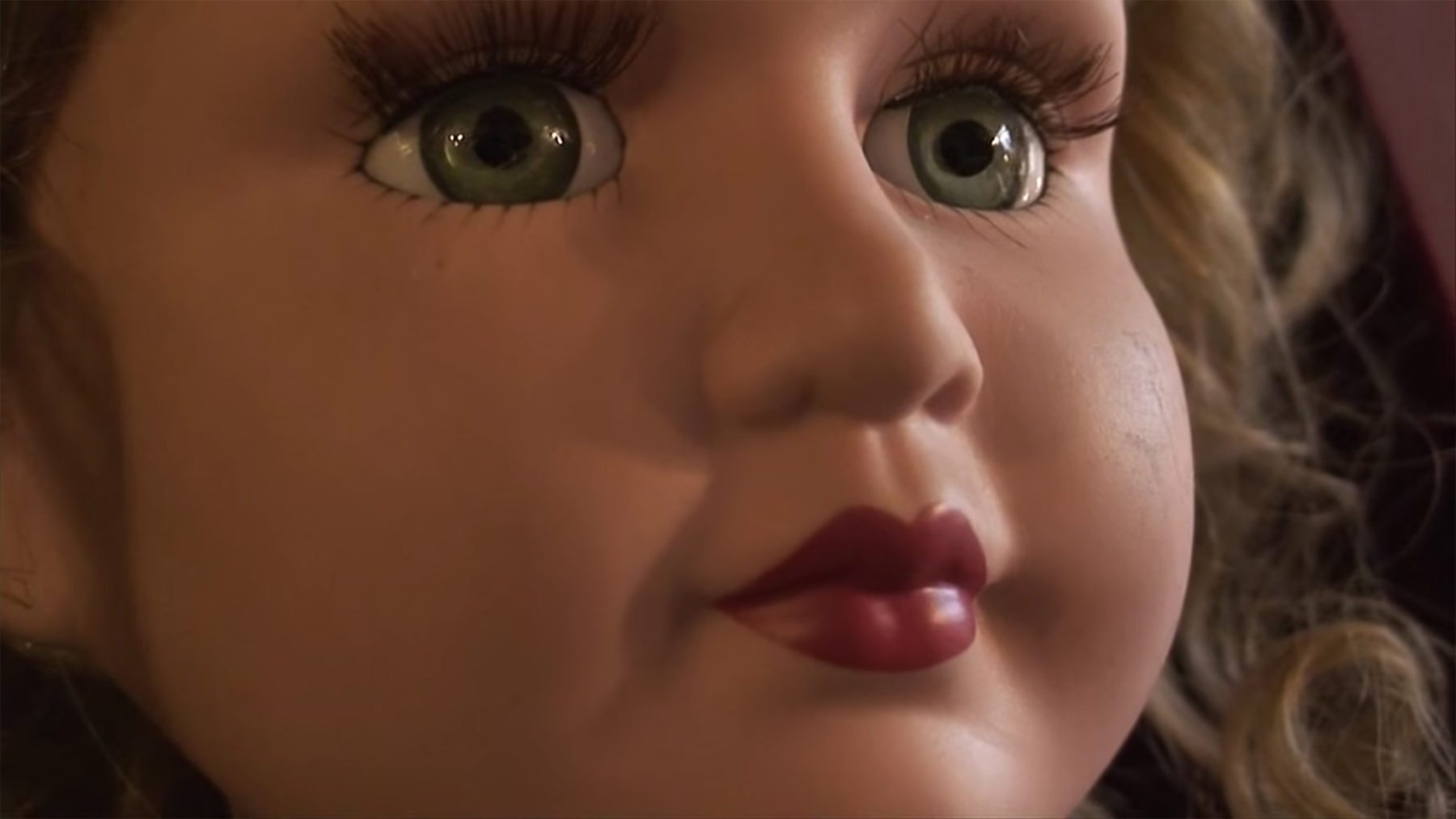
The Queen Anne Hotel originally opened in 1890 under Miss Mary Lake’s School for Girls. The school offered classes to the city’s young, upper-class women, and educated them on etiquette as they prepared to debut into San Francisco society.
Nearly a decade later, the building was sold and reopened as an exclusive gentlemen’s club. Having narrowly survived the 1906 Earthquake, a private company purchased the club in 1980 and completely renovated the club, transforming it into the hotel it is today. Guests staying on the fourth floor — and specifically in the Mary Lake Suite (room 410) — have told tales of encountering the ghost of Miss Mary Lake. Paranormal investigators and ghost hunters have confirmed this place to be haunted, but they claim Mary Lake is a benign spirit.
Guests have reported having their clothes unpacked and hung up, waking up to having blankets tucked in around them, and having dropped objects picked up. Book a room… if you dare!
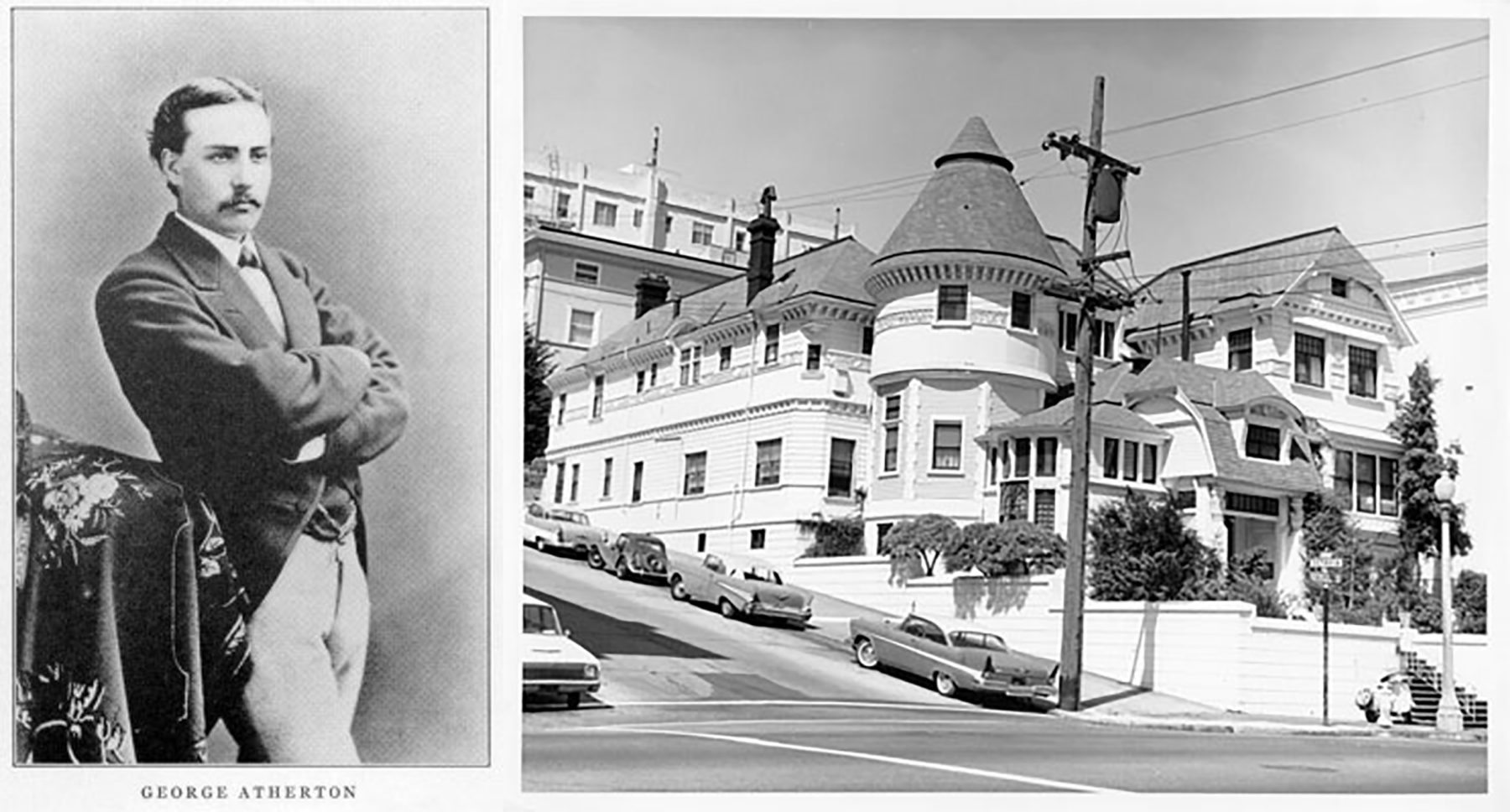
1. Atherton Mansion
The Atherton Mansion is located at 1990 California Street at Octavia Street. It was once home to Gertrude Atherton, Dominga de Goni Atherton, Carrie Rousseau and George Atherton. Dominga built and moved into the home in 1881 with her son George and his wife Gertrude. Domingo and Gertrude belittled George so often that life became unbearable for him, and once he had had enough, he planned to run away to Chile. His plan went according to plan, until his kidneys failed halfway through his journey, and he died.
Sailors put his body in a barrel of rum and sent it to the Atherton Mansion. Though he received a proper burial, his spirit never left the house! His ghost was known for haunting the mansion, to the point where Domingo was so troubled by his presence she had to sell the home. Several owners quickly came and went because of George’s spirit.
In 1923, Carrie Rousseau purchased the home, where she lived in the ballroom with 50 cats until her death in 1974, at the ripe age of 93. Residents today report moving cold spots, wind blowing through closed rooms, voices at night, and knocking sounds. Sylvia Brown conducted a séance in the home and was able to identify three female spirits and a “frail” male spirit.
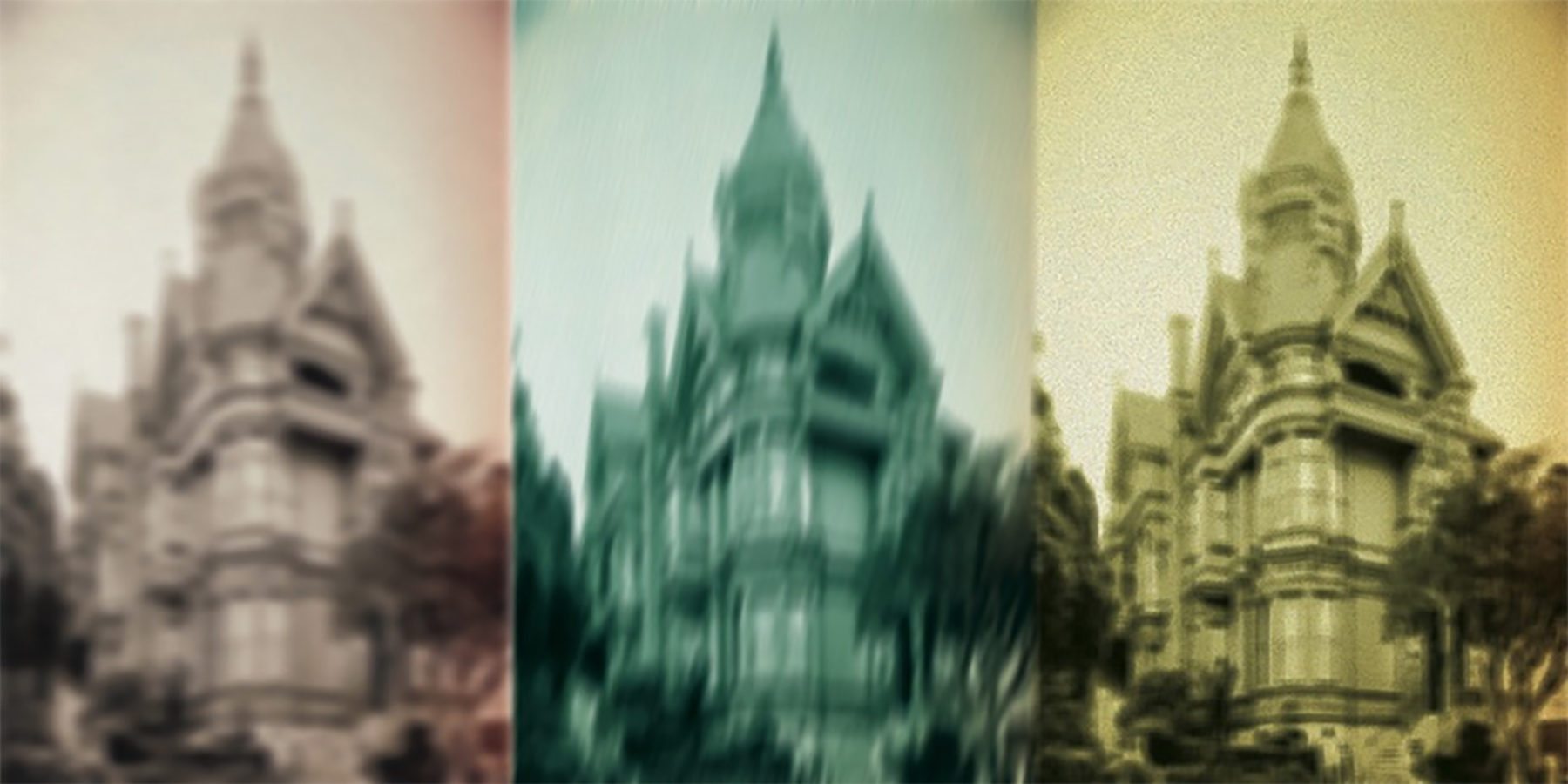
Want to tour an actual haunted house?
The Haas-Lilienthal House • 2007 Franklin Street
October 21st, 22nd, 28th & 29th. 7:00PM-10:00PM
Mayhem Mansion begins this Friday! To schedule visits check EventBrite.
Tour guides lead small groups though this mansion where ‘inhabitant have been indefinitely quarantined for a mysterious malady.’ All ages are welcome however children MUST be accompanied by a parent or guardian. The tour ends in the “Spookeasy” where the over-21 crowd can choose from wine, mixed drinks, beers. Non-alcoholic beverages are sold as well. All proceeds go to the non-profit organization, San Francisco Heritage for continued maintenance and upkeep of the Haas-Lilienthal House.
History of the Haas-Lilienthal House
The Haas-Lilienthal House is San Francisco Designated Landmark #69 and is on the U.S. National Register of Historic Places. It is San Francisco’s only intact Victorian era home that is open regularly as a museum and features authentic furniture and artifacts. The home was built in 1886 by William Hass’ architect, Peter R. Schmidt and contractors McCann & Biddell. The home withstood the 1906 earthquake with only slight damage, however, the home was at threat to the fires that came shortly after the quake. The Haas family watched the fire from their roof of their house and eventually were forced out by the help of city authorities. They made camp at their local park, Lafayette Park. The house did not burn down (after all) and The City was rebuilt. In 1928 a living quarter over a garage was added to the home. Three generations of Haas and Lilienthal descendants lived at 2007 Franklin Street. To help keep the home alive, the Heritage is helping to educate people about the City’s architectural legacy and why it is important to preserve and protect it.
Other Haunted Adventures in the Bay:
Haunted Hornet, San Francisco: Tour the Aircraft Carrier
Six Flags Discovery Kingdom, Vallejo: Fright Night
Winchester Mystery House, San Jose: Flashlight Tour & more!
The Wharf Market Place, Monterey: Ghost Tour of Monterey





